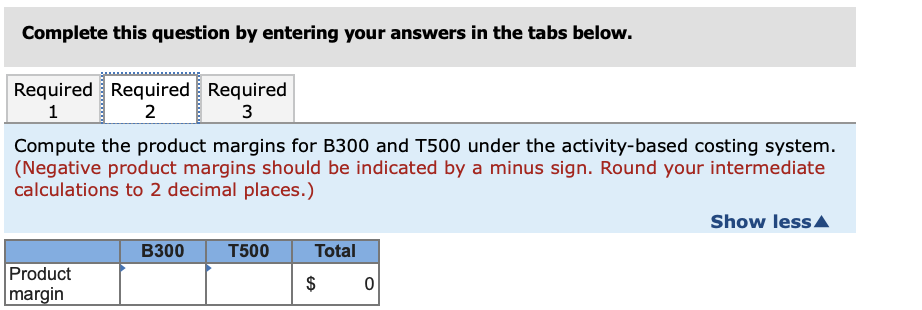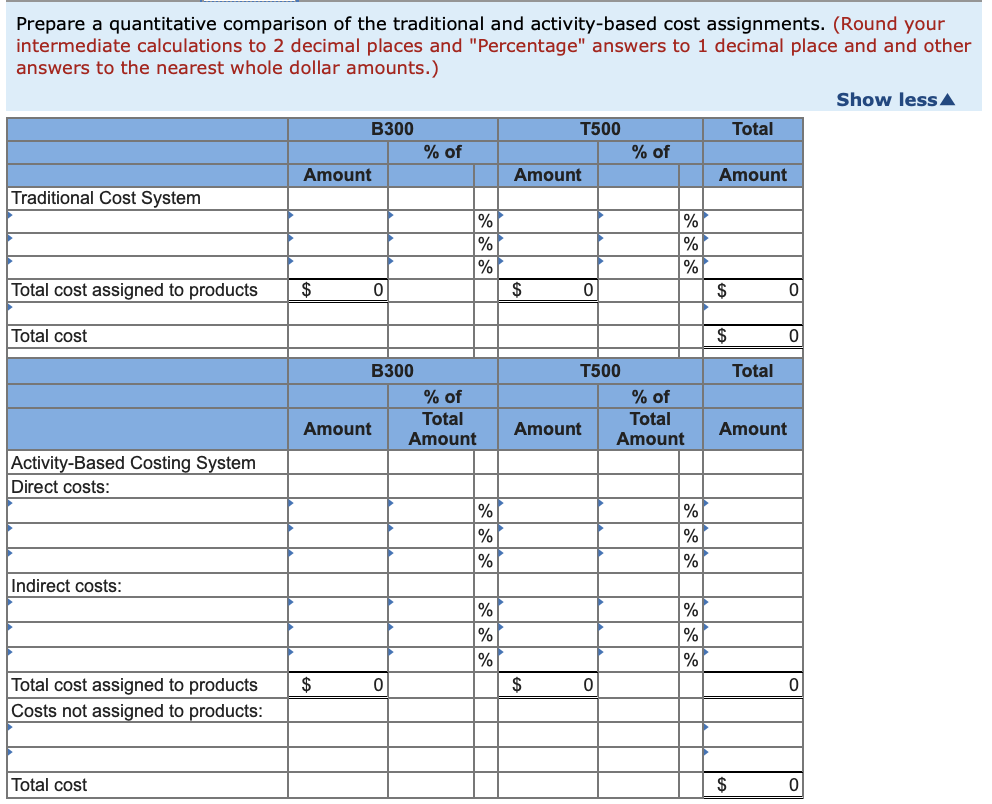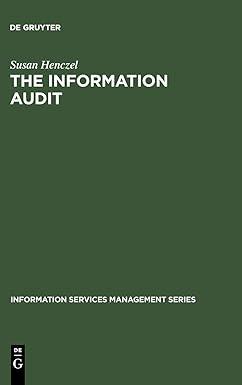could I get the answers with steps for this?



Hi-Tek Manufacturing, Inc., makes two types of industrial component parts-the B300 and the T500. An absorption costing income statement for the most recent period is shown: Hi-Tek Manufacturing Inc Income Statement $1,702,000 1,233,612 468,388 Sales Cost of goods sold Gross margin Selling and administrative expenses 640,000 $ (171,612) Net operating loss Hi-Tek produced and sold 60,100 units of B300 at a price of $20 per unit and 12,500 units of T500 at a price of $40 per unit. The company's traditional cost system allocates manufacturing overhead to products using a plantwide overhead rate and direct labor dollars as the allocation base. Additional information relating to the company's two product lines is shown below B300 T500 Total Direct $400,000 $162, 100 $ 562,100 ials Direct labor $120,100 $ 42,300 162,400 Manufacturing overhead 509,112 Cost of goods sold $1,233,612 The company has created an activity-based costing system to evaluate the profitability of its products. Hi-Tek's ABC implementation team concluded that $51,000 and $105,000 of the company's advertising expenses could be directly traced to B300 and T500, respectively. The remainder of the selling and administrative expenses was organization sustaining in nature. The ABC team also distributed the company's manufacturing overhead to four activities as shown below: Activity Manufacturing Activity Cost Pool (and Activity Measure) Machining (machine-hours) Setups (setup hours) Product-sustaining (number of products) Overhead B300 T500 Total 90,300 62,100 152,400 $202,692 144,320 78 250 328 101,600 1 2 sustainin zation- Total manufacturing overhead an 60,500 NA NA NA $509,112 cost Required: 1. Compute the product margins for the B300 and T500 under the company's traditional costing system. 2. Compute the product margins for B300 and T500 under the activity-based costing system. 3. Prepare a quantitative comparison of the traditional and activity-based cost assignments. Complete this question by entering your answers in the tabs below. Required Required Required 1 2 3 Compute the product margins for the B300 and T500 under the company's traditional costing system. (Round your intermediate calculations to 2 decimal places and final answers to the nearest whole dollar amount.) Show lessA 300 T500 Total Product margin 0 Complete this question by entering your answers in the tabs below. Required Required Required 1 2 3 Compute the product margins for B300 and T500 under the activity-based costing system. (Negative product margins should be indicated by a minus sign. Round your intermediate calculations to 2 decimal places.) Show lessA B300 T500 Total Product margin 0 Prepare a quantitative comparison of the traditional and activity-based cost assignments. (Round your intermediate calculations to 2 decimal places and "Percentage" answers to 1 decimal place and and other answers to the nearest whole dollar amounts.) Show less A B300 T500 Total % of % of Amount Amount Amount Traditional Cost System % % % % % Total cost assigned to products $ 0 0 Total cost 0 Total B300 T500 % of % of Total Total Amount Amount Amount Amount Amount Activity-B Direct costs: ing System Co % % % % % % Indirect costs: % % % % % % Total cost assigned to products $ $ 0 0 Costs not assigned to products: Total cost $ 0









